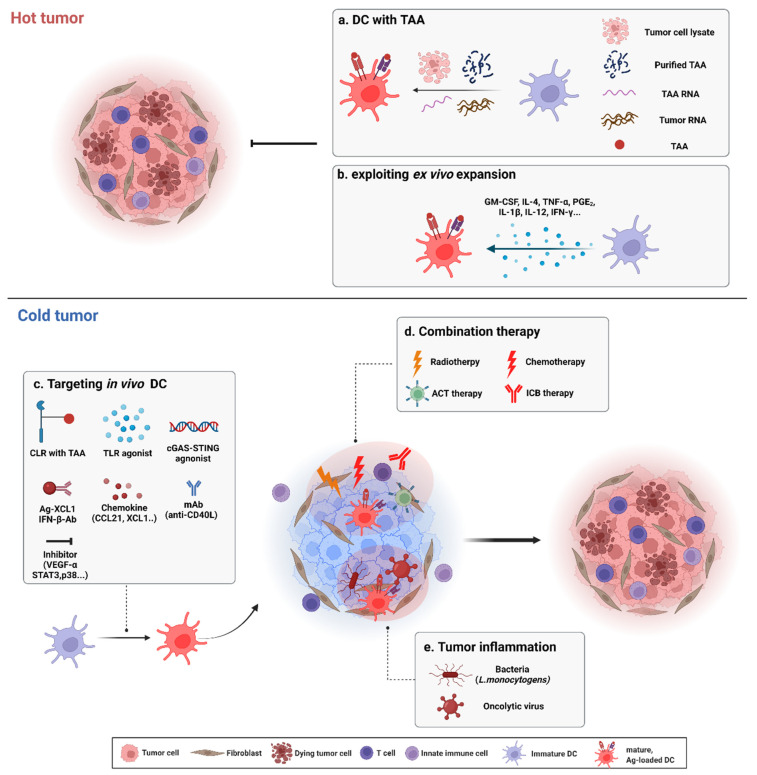Figure 3.
Dendritic cell (DC)-based immunotherapy for hot and cold tumors. Summary of targeting hot and cold tumors using DC-based immunotherapy is illustrated. (a) DC pulsed with various form of TAAs: irradiated tumor cell lysate, purified TAA peptide, purified TAA RNA and whole tumor RNA. (b) Various cytokines stimulate immature DC. For treatment of cold tumor, strategies to convert cold tumors to hot tumors are considered. (c) Direct binding of CLR-TAA, PRRs (TLR, STING...) agonist, chemokines, cytokines and monoclonal antibodies (mAbs) which bind co-stimulatory molecules can enhance migration and functionality of DC. Inhibition of tumor-derived immunosuppressive factors can reverse cold to hot. (d) DC-based immunotherapy combined with radio/chemotherapy, ACT therapy and ICB therapy increase the efficacy of DC therapy. (e) Bacteria or tumor-specific replicating virus induce inflammation in tumor which promotes immunologic hot phase. TAA, tumor-associated antigen; TNF-α, tumor necrosis factor-α; PGE2, prostaglandin E2; CLR, C-type lectin receptor; TLR, Toll-like receptor; mAb, monoclonal antibody; VEGF-α, vascular endothelial growth factor-α; ACT, adoptive cell transfer therapy; ICB, Immune checkpoint blockade.

